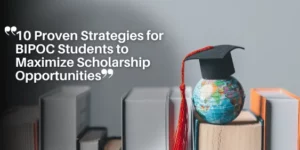Trump’s Executive Order Revolutionizes School Choice: What Parents Need to Know About New Educational Opportunities
Introduction: Trump’s Vision for Educational Freedom 🇺🇸🌟
President Trump’s January 2025 Executive Order represents a bold leap towards educational freedom in America.
Firmly centered on the philosophy that parents rather than the government should be the primary decision-makers in their children’s education, this directive strives to expand and enrich educational opportunities for families nationwide.
The Executive Order emphasizes parental rights in educational decision-making, aiming to dismantle the rigid traditional system and offer a spectrum of choices tailored to individual student needs.

Emphasis on Parental Rights in Education Decision-Making 👨👩👧👦
At the heart of this executive action is the recognition of parental rights. By empowering parents to select the best educational path for their children, the initiative promises to restore control to families.
This move challenges the long-standing system where government’s role in assigning schools often limits options for students.
Instead, parents are provided the agency to choose environments they believe will foster their child’s academic and personal growth.
Core Philosophy: Parents Directing Children’s Education 📚
President Trump’s core philosophy asserts that parents know their children best. This belief underpins the Executive Order’s various components, which aim to maximize educational freedom.
By enabling parents to select from public, private, charter, or faith-based schools, the order refocuses various funding streams and resources to support diverse educational settings.
This revolutionary shift is anticipated to enhance educational outcomes by placing decisions about schooling directly into the hands of families, thus ensuring every child has the opportunity to receive a world-class education, regardless of their zip code.
With a renewed commitment to educational freedom and parental choice, the Executive Order sets the stage for a transformative era in American education, one where families are empowered to tailor their educational experiences to fit their unique needs and aspirations.
This initiative promises to open doors to innovative and effective educational pathways, fostering a brighter future for students across the nation.
The Current State of American Education: Why Change Is Needed 📉
✅ Alarming Statistics
The current state of American education reveals a dire need for change.
According to the latest National Assessment of Educational Progress (NAEP), a startling 70% of 8th graders are not proficient in reading, while an even higher 72% fall below proficiency in math. Furthermore, 40% of 4th graders do not meet basic reading levels.
These figures are alarming, especially when considering the vast amounts of resources and funding that have been invested into education.
✅ Stagnant Standardized Test Scores
Despite hundreds of billions of dollars spent on government-run education, standardized test scores have shown little to no improvement over the past 30 years.
This stagnation suggests that simply pouring more money into the existing system is not an adequate solution.
The lack of progress highlights systemic issues that need to be addressed through innovative and effective measures 🔍.
✅ Limitations of the Traditional Government-Assigned System
The traditional model of assigning schools based on geographic location has failed to meet the diverse needs of students and families.
This one-size-fits-all approach does not account for varying educational requirements or preferences. As a result, many students are left behind, unable to access the quality education they deserve.
President Trump’s recent executive order aims to address these critical issues by promoting school choice and enhancing educational opportunities for all American families.
This initiative seeks to empower parents to decide the best educational path for their children, advocating for a system that prioritizes individual needs and preferences over rigid, inefficient bureaucratic assignments.
Through these transformative policies, the goal is to ensure a brighter future where every child has access to a world-class education, regardless of their zip code.
Key Components of the Executive Order 🏛️
✅ Department of Education Guidance on Federal Funding for K-12 Scholarship Programs
President Trump’s January 2025 Executive Order emphasizes the critical role that federal funding can play in expanding educational opportunities for American families.
One of the key components of this order directs the Department of Education to issue clear guidance on how federal funding formulas can support state K-12 scholarship programs.
This guidance is designed to help states use existing federal funds more effectively, offering scholarships that enable students to attend schools that better match their individual needs and preferences.
✅ Prioritization of School Choice in Discretionary Grant Programs
Another significant aspect of the Executive Order is the prioritization of school choice in the Department of Education’s discretionary grant programs.
By prioritizing school choice, the Department aims to ensure that more funding is directed towards programs that offer students and their families a variety of educational options.
This move is intended to encourage the development and expansion of charter schools, private schools, and other educational alternatives, ultimately providing parents with greater control over their children’s education.
✅ Directives to Health and Human Services on Block Grants
The Executive Order also includes directives to the Department of Health and Human Services (HHS) about using block grants to support educational alternatives.
Specifically, the Order requires HHS to issue guidance on how states can use funds from block grants for children and families to support educational choices, including private and faith-based options.
This directive aligns with the overall goal of the Executive Order, which is to empower parents to make the best educational decisions for their children, regardless of the type of school they choose.
Benefits and Potential Outcomes ✅
These components of the Executive Order are designed to enhance educational freedom and improve academic outcomes for students across the country.
By leveraging federal funding to support school choice, the Trump Administration aims to break down the barriers imposed by the traditional government-assigned education system, offering students a chance to thrive in environments that best suit their learning needs.
The emphasis on flexibility and parental choice is expected to lead to higher levels of student achievement and greater satisfaction among families, as they gain access to a broader range of educational opportunities.
Transition to Special Provisions for Military and Native American Families 🎖️🪶
These new provisions set the stage for further reforms, particularly in supporting specific communities that face unique educational challenges, such as military families and Native American families.
This aspect of the Executive Order highlights the administration’s commitment to ensuring educational equity and access for all.
Special Provisions for Military and Native American Families
New Options for Military Families 💰
President Trump’s recent Executive Order introduces groundbreaking options for military families, granting them the ability to allocate Department of Defense funds toward a school of their choice.
This provision recognizes the unique challenges faced by military families, such as frequent relocations and deployments, which often disrupt children’s education.
By offering this financial flexibility, the initiative aims to ensure that military children receive consistent, high-quality education regardless of their family’s location or circumstances.
Empowering Native American Families
Similarly, the Executive Order includes measures to assist families with students in Bureau of Indian Education (BIE) schools.
Specific plans are directed at providing these families the option to use federal funds for school choice, enabling access to better educational alternatives.
This shift is designed to address persistent issues within BIE schools such as underfunding and subpar academic outcomes.
By allowing greater access to different types of schools, this provision aims to improve the educational experiences and future prospects of Native American students.
Addressing Community-Specific Challenges 🌟
These special provisions are tailored to address the distinctive educational hurdles faced by military and Native American communities.
For military families, the instability of continuously changing schools can be mitigated with the ability to choose and maintain educational consistency.
For Native American families, the opportunity to choose schools beyond the BIE system opens doors to higher quality education and culturally enriching environments that may be more aligned with their needs.
These changes promote not only educational freedom but also equity, ensuring all children have the opportunity to succeed academically, regardless of their background or living situation.
Through these targeted initiatives, the Executive Order seeks to remedy long-standing educational disparities and empower parents with the freedom to choose the best educational path for their children.
This focus on community-specific needs underscores a more personalized approach to educational reforms and aims to foster a fairer and more effective educational system for all.
Review of First Trump Administration’s School Choice Accomplishments
| Área | Descrição |
|---|---|
| 🧮 Financiamento de Escolas Charter | Investimento de US$ 1,5 bilhão em escolas charter públicas, expandindo o setor para 7.500 escolas que atendem mais de 3 milhões de estudantes. |
| 💰 Reformas nos Planos 529 | Ampliação dos planos de poupança educacional 529, permitindo retiradas anuais de até US$ 10.000 isentas de impostos para cobrir custos de escolas K-12, incluindo privadas e religiosas. |
Legislative Advocacy and In-Person Learning during the Pandemic 🏫
The Trump administration’s efforts didn’t stop at financial support and investment. Advocacy for the School Choice Now Act and the Education Freedom Scholarships and Opportunity Act highlighted Trump’s commitment to educational freedom.
These legislative efforts aimed to expand school choice options and provide more educational opportunities for families nationwide.
During the pandemic, many low-income parents were forced into remote learning situations, which often fell short of delivering quality education.
Recognizing this, Trump’s administration ensured the availability of in-person learning options for these families.
This move was vital in mitigating the adverse effects of distance learning on academically vulnerable students.
Ensuring Consistency and Opportunity 📘
The re-authorization of the D.C. Opportunity Scholarship program, not once but twice, underlined the administration’s ongoing dedication to providing educational opportunities to underprivileged families in Washington, D.C.
This program has been crucial in offering school choice to families who might not otherwise be able to afford it.
Importantly, the recent Executive Order continues the trajectory set by these past initiatives.
By building on the successes and lessons learned from the first administration, it reaffirms the commitment to ensuring that every child has access to a world-class education tailored to their needs.
This continuity signifies a robust and unwavering dedication to educational freedom and parental rights.
These accomplishments provide the foundation upon which the current Executive Order is built, setting a clear and consistent path toward educational improvement and expanded choice for all American families 🇺🇸.
The Benefits of School Choice: What Research Shows 📊
Improved Academic Performance 🧠
School choice programs have a proven track record of bolstering academic performance.
Studies consistently show that students participating in school choice initiatives outperform their peers on standardized tests.
For instance, data collected over several years indicates that school voucher recipients not only achieve higher test scores but also experience greater academic growth in comparison to students in traditional public schools.
Families who participate in these programs often report a noticeable improvement in their children’s academic abilities, reflecting the tailored educational approaches many of these chosen schools provide.
Cost Effectiveness and Taxpayer Savings 💵
One of the standout benefits of school choice is its cost effectiveness.
By enabling students to attend schools that better meet their individual needs, these programs often operate more efficiently than the conventional public school system.
This not only results in better educational outcomes but also translates into significant taxpayer savings.
Studies have found that school choice programs, including charter schools and vouchers, frequently deliver high-quality education at a lower cost per student compared to traditional public schools.
This cost-saving advantage makes school choice an appealing option for budget-conscious policymakers and taxpayers alike.
Increased School Safety 🛡️
Parents consistently report higher levels of safety in schools of choice.
According to national surveys, families whose children attend schools through voucher programs or charter schools believe that their selected institutions offer a more secure and nurturing environment.
These perceptions are grounded in real improvements in security measures and community culture within choice schools.
Enhanced safety not only fosters a better learning atmosphere but also contributes to overall student well-being, making it a vital component of educational success.
By recognizing these benefits, it becomes clear how school choice initiatives can positively reshape the educational landscape, providing more personalized, safe, and cost-effective schooling options for families.
Broad Public Support for Educational Freedom 🤝
President Trump’s commitment to educational freedom is strongly supported across various demographic groups.
This enthusiasm for school choice is not just limited to any one part of society but is widely endorsed.
According to recent surveys, 70% of Democrats, 73% of Black Americans, and 69% of Hispanic Americans are in favor of school choice programs.
These figures signify a broad-based backing that transcends political affiliations and racial boundaries, highlighting a united front for educational reform.
Expanding School Choice Nationwide 🌐
The national momentum for school choice is undeniable.
Currently, 33 states have implemented some form of school choice program.
These programs vary in scope and design but share a common goal: empowering parents to select the best educational environment for their children.
Among these, twelve states have taken significant steps to introduce universal or near-universal school choice.
This means families in these states, regardless of income or geographic location, have the opportunity to choose where and how their children are educated.
Educational Freedom and Its Widespread Appeal 🌟
The nearly unanimous support among diverse demographic groups reinforces the pressing need for policies that empower parents and offer children tailored educational opportunities.
This widespread approval stems from the recognition that the traditional one-size-fits-all model may not adequately address the unique needs of every student.
The broad public support for educational freedom provides a strong foundation for President Trump’s Executive Order.
It highlights the growing consensus that educational reform is essential for ensuring that every child has access to a world-class education, tailored to their individual needs and circumstances.
What This Means for Parents: Practical Next Steps 📌
With President Trump’s Executive Order on educational freedom, parents are presented with new opportunities to tailor their children’s education to better suit their needs and aspirations.
Here are some practical steps parents can take to make the most of these expanded options.
Exploring Expanded Educational Options 🔍
Parents can start by researching the different types of schools available, including public, private, charter, and faith-based institutions.
It’s essential to understand the unique benefits, teaching philosophies, and curriculums each type of school offers.
Visit schools, attend open houses, and speak with other parents and educators to get a comprehensive understanding of what each option entails.
Financial Benefits 💰
One of the significant advantages of the Executive Order is the enhancement of financial support for educational choices.
Parents can now withdraw up to $10,000 per year, tax-free, from their 529 education savings plans to cover K-12 educational expenses.
This provision opens up substantial savings opportunities, especially for those planning to invest in private or religious schooling.
Utilizing these funds can make higher education facilities more accessible and affordable, ensuring that financial constraints don’t limit educational opportunities.
Timeline for Implementation ⏳
The Executive Order outlines a clear timeline for the implementation of its various aspects.
The Department of Education will soon issue guidelines on how states can use federal funding to support K-12 scholarship programs.
Additionally, the prioritization of school choice in grant programs will be rolled out progressively, ensuring that educational institutions have the time to adapt.
Parents should keep an eye on these developments and be ready to act as new funding and scholarships become available. Staying informed through school district announcements and educational forums will be crucial to taking timely action.
By taking these steps, parents can fully leverage the advantages provided by the Executive Order, creating a more personalized and effective educational journey for their children.
This proactive approach can significantly enhance the quality of education and overall development outcomes.
The Future of Education Under This Initiative 🔮
Long-term Vision for Transforming the American Education System
President Trump’s Executive Order on educational freedom and opportunity charts an ambitious course for the future of American education.
The fundamental shift is towards offering parents and students unparalleled choice in education, irrespective of their geographic location.
By prioritizing parental rights in decision-making, the initiative aims to create a more dynamic and responsive education system that can adapt to the diverse needs of students across the nation.
The long-term vision includes the continued expansion of school choice programs, with a goal to make such options available to every American family.
By offering public, private, charter, and faith-based educational opportunities under one umbrella, the initiative seeks to dismantle the traditional, one-size-fits-all approach to schooling.
The hope is that this diversification will lead to increased competition, driving educational institutions to innovate and elevate their standards to attract and retain students.
Potential Challenges and Opportunities in Implementation ⚖️
The implementation of this Executive Order, though promising, is not without its challenges.
One major concern is the equitable distribution of resources, especially in underfunded areas.
Ensuring that all families, regardless of socioeconomic status, have access to quality educational choices will require vigilant oversight and ongoing adjustments to funding formulas and support systems.
Administrative hurdles also loom large. States and local agencies will need to navigate the new guidelines and ensure they are aligning federal mandates with local needs.
Additionally, there is the potential for pushback from those invested in maintaining the status quo, including certain advocacy groups and segments of the educational establishment.
On the flip side, there are myriad opportunities.
Overhauling the education system opens the door to innovative teaching methods, personalized learning plans, and technology integration that can tailor education to individual needs, thereby improving outcomes.
Furthermore, this initiative encourages partnerships between private entities and public institutions, fostering an environment where best practices can be shared and scaled.
How This Executive Order Could Reshape Educational Access and Quality for Generations to Come 🎓
The potential impact of this Executive Order on future generations cannot be overstated.
By shifting control from government entities to parents, the initiative recognizes and leverages the unique insights parents have into their children’s needs.
This grassroots approach to educational reform could lead to a more engaged and motivated student body, as educational settings are increasingly aligned with individual interests and strengths.
Furthermore, as educational choice becomes more widespread, we can anticipate a ripple effect leading to improvements in overall educational quality.
Schools that are part of choice programs will likely strive for higher performance to attract and retain students, elevating the educational experience across the board.
In summary, President Trump’s Executive Order on educational freedom is a groundbreaking step towards revolutionizing the American education system.
It seeks to empower parents, enhance educational quality, and provide robust, diverse learning opportunities for all students, laying the groundwork for a brighter future.







